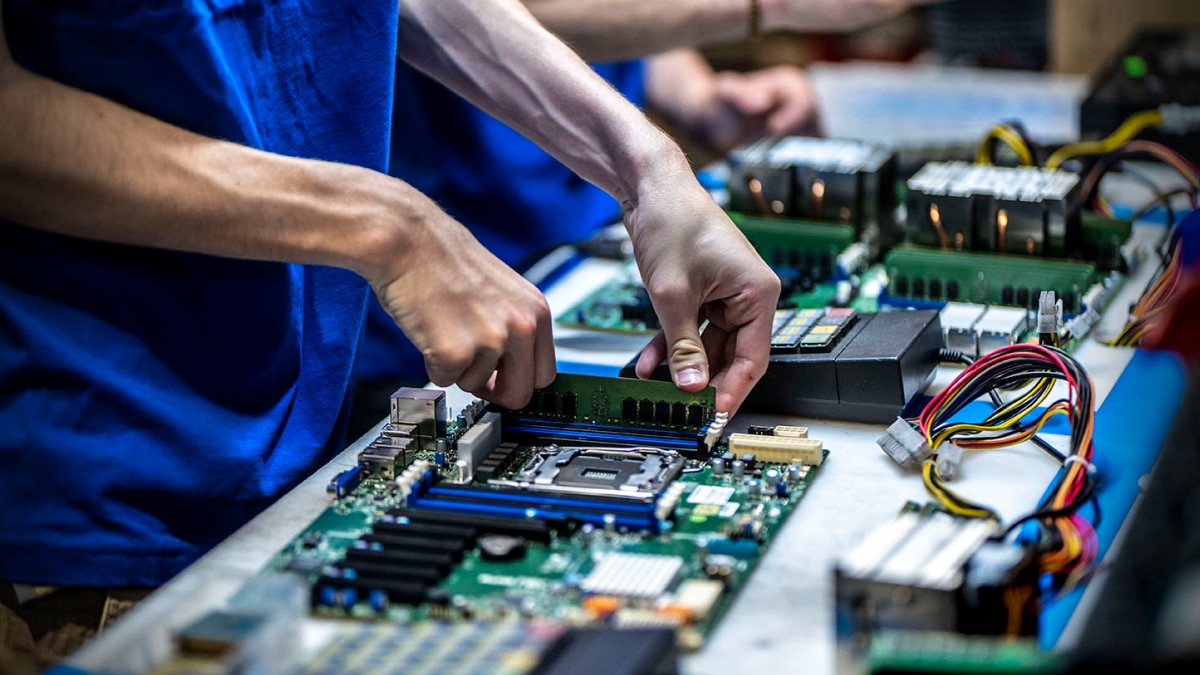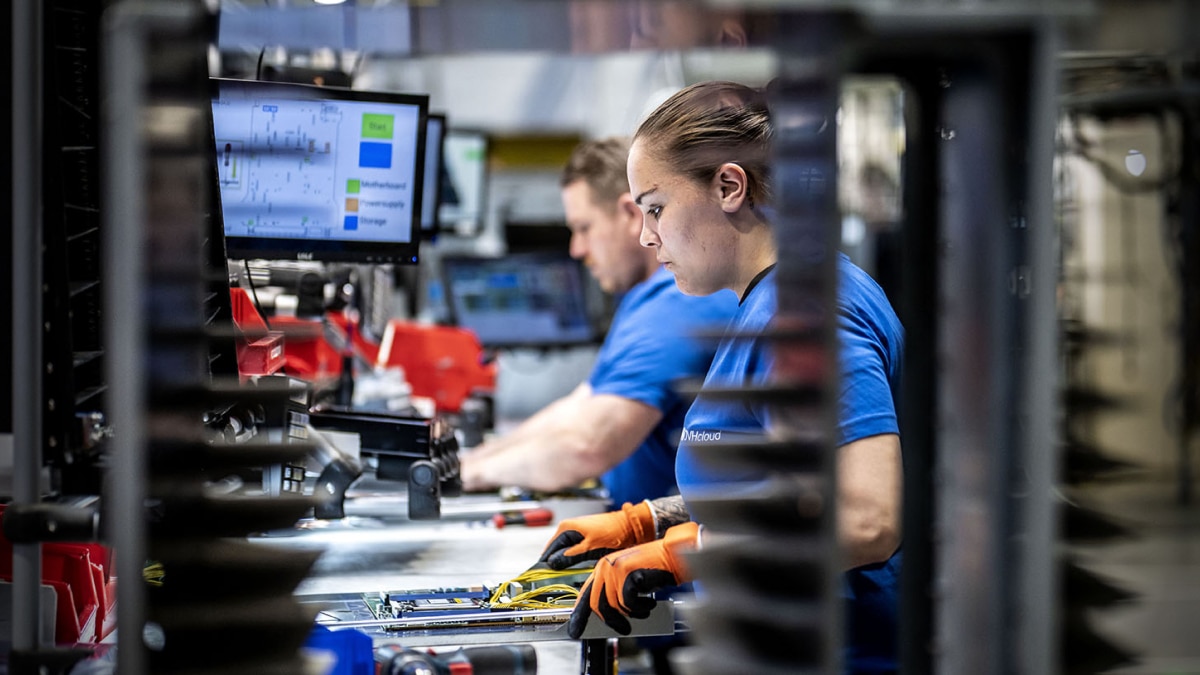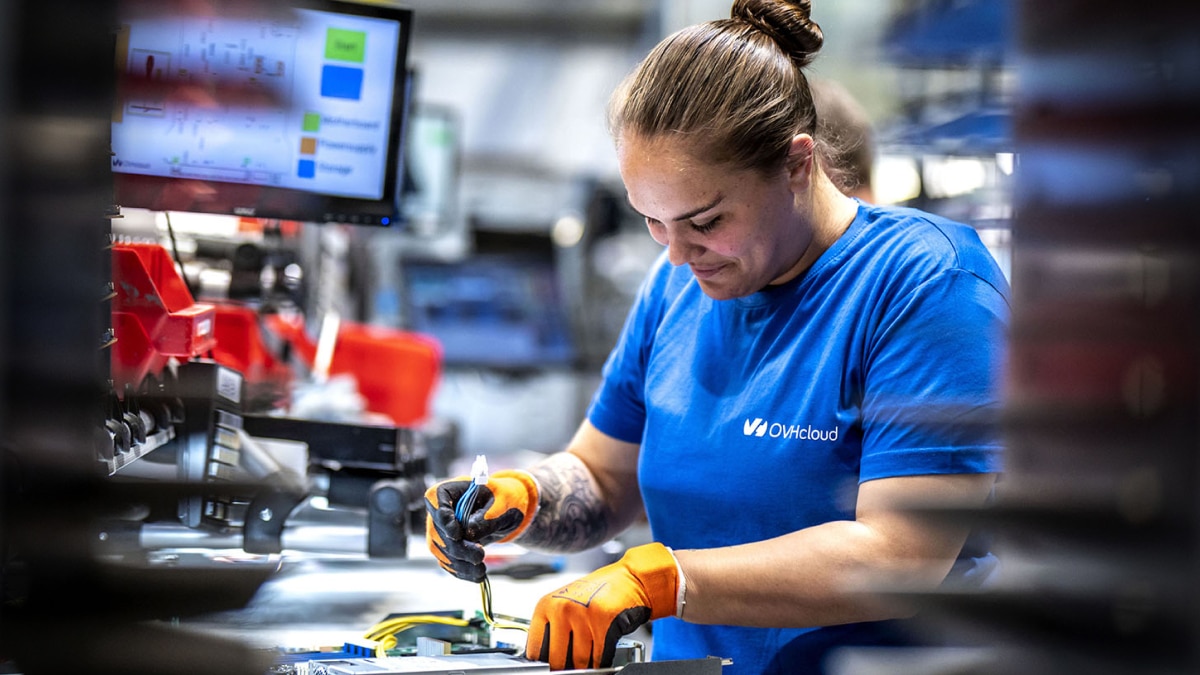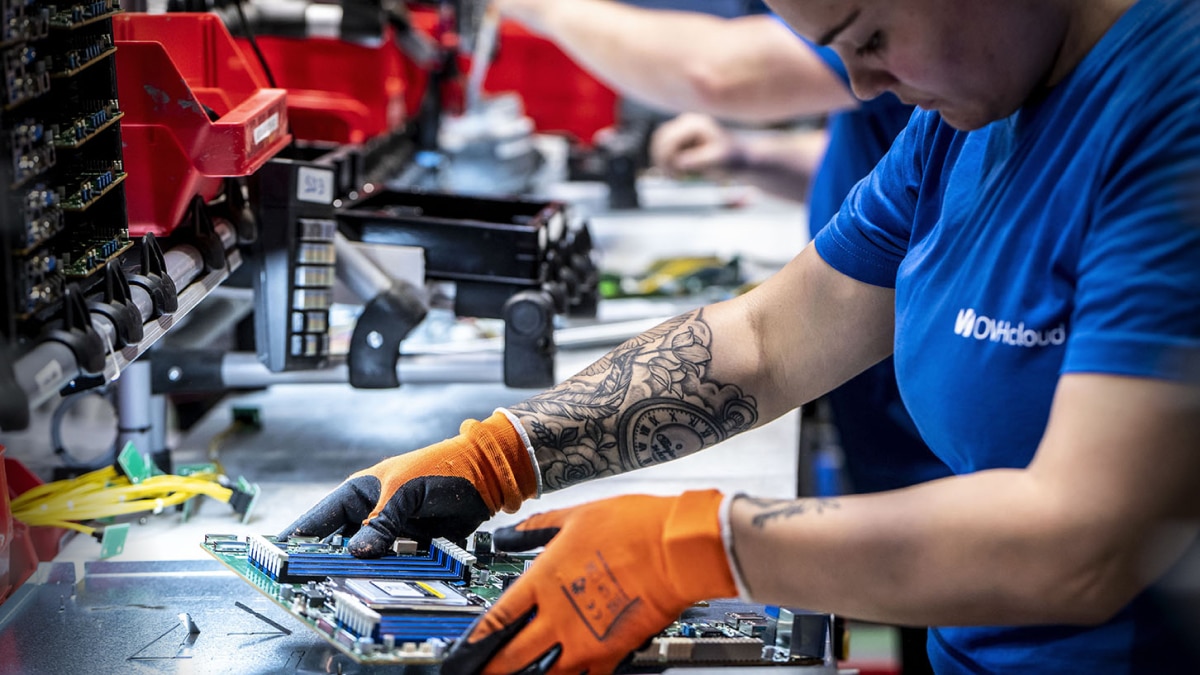OVHcloud delivers next generation Bare Metal services with AMD
The requirements of cloud service customers are constantly evolving, with an increasing demand for computational power for new workloads such as AI.
When European hyperscale cloud provider OVHcloud was looking to meet this demand with an expanded product range, the company turned to the latest AMD EPYC processors. The combination of performance, price, and competitive power consumption were exactly what was needed for OVHcloud’s next generation of services.

Extending server lifespans for sustainability
“We are a leader in Europe,” says Gilles Lasnier, IT Director, Hardware Engineering, OVHcloud. “We offer a wide range of services from Bare Metal servers to virtual instances. Our infrastructure offers applications-as-a-service, such as object storage, managed databases, public cloud, and private cloud. Our public cloud is based on OpenStack, while our private cloud services use VMware by Broadcom or Nutanix. We are now building Bare Metal platforms for different customers’ workloads.”
As with other hyperscale providers, OVHcloud faces continual customer demand for more compute, density, and reliability, but with lower power consumption and at a lower price. This has led to a long history with AMD from before the launch of EPYC processors. “We have a strong partnership with AMD, which gives us access to their new technologies,” says Lasnier. “That is how we first learned about EPYC processors. For two and a half years, we have had more and more feedback from customers asking for new AMD EPYC platforms. They are really interested in AMD processors because they know they are very cost effective and deliver exceptional performance.”
With sustainability rooted in its core values, for over 20 years OVHcloud has pioneered a bespoke watercooling system to effectively remove heat from its servers.
As such OVHcloud designs and builds its own servers implementing waterblocks in direct contact with chips to transport the heat outside of the data centre through dry coolers for final dissipation. Thanks to the reduced thermal resistance of water compared to air cooling, no refrigeration method is used which leads to industry leading PUE and WUE for the Group’s data centers. “Our R&D teams consistently challenge themselves to update our cooling technology to cope with today’s most demanding CPUs such as AMD EPYC,” says Denis Hamon, Product Manager OVHcloud. “A glass of water is sufficient to cool down a server for 10 hours of use at OVHcloud.”
Sustainability is also central to OVHcloud’s services, starting with how it deploys infrastructure across its range of services. The company “waterfalls” systems from its premium Bare Metal offerings to its lower cost servers. Having the latest platform at the top of OVHcloud’s hardware “waterfall” is essential for remaining competitive. “We refresh our high intensity workloads servers every 18 months. For the Advance platform aimed at a better performance price ratio, it’s a 24-month lifecycle,” says Hamon.
However, with this recent rollout OVHcloud was looking for platforms to build out its Enterprisegrade Scale and High Grade server ranges, which offer 99.99 percent SLA for uptime, aimed at intensive and mission critical workloads. The features of AMD 4th Gen EPYC processors looked ideal to empower these ranges. “We were targeting more diverse workloads,” says Hamon. “This includes AI inference workloads with our Scale solution, as well as grid computing. For the rest of this range, we aim our services at general purpose workloads such as hyperconvergence or high intensity ones where the number of cores is critical.”

Impressive benchmark results
Sustainability is still central for these high-performance cloud solutions. “We need more compute but with less energy consumption for our versatile workloads,” says Lasnier. “We must reduce the power consumption, footprint, and TCO in our data center, to reach more use cases. Three years ago, we created a netzero strategy plan for 2030. This includes improvement in resource use, renewable energy, consumer accountability, the circular economy, and sustainable supply, as well as carbon capture strategies. For two decades we have developed our own custom water cooling, and we are now able to cool most hardware components with the highest TDP in the Bare Metal platforms.”
For its Scale and High Grade ranges, OVHcloud wanted the best possible performance, aided by its powerful cooling capabilities. OVHcloud tests performance extensively during its procurement process. “We perform internal benchmarks but also benchmarks from standard suites to ease visibility for our customers,” says Lasnier. “This includes PassMark®, SPEC®, and Geekbench™. We test simple compute workloads such as single threaded or per-core performance with multi-threaded to complex and dedicated ones like for AI use cases. We also monitor power consumption during these benchmarks and take pricing into account. This allows us to assess the best platform solution for our customers.”
“These benchmarks for the 4th Gen AMD EPYC processors showed a 15 to 25 percent improvement over the existing AMD EPYC platforms we have for multi-stage workloads,” says Lasnier. “This was with no optimizations or use of accelerators because a lot of our customers base their comparison on general workloads. We found that the 4th Gen AMD EPYC CPUs were the most cost-effective solution, too. With a dedicated workload from our Web cloud team, 4th Gen AMD EPYC CPUs were three times faster than legacy platforms. This workload places massive requests to the server. We also found that the 4th Gen AMD EPYC CPU was more resilient when we tried to flood the server with more and more requests. It was able to handle more throughput than the previous AMD EPYC generation. 4th Gen Zen4 cores were 1.5 time faster than 3rd Gen Zen3 cores.”

Performance to target new business
“This is a big compute improvement over the previous generation with current workloads,” says Lasnier. “But we also tried benchmarks with new workloads, such as AI. In our testing the AMD 4th Gen EPYC processor was the best performing CPU here as well.”
“Our grid computing objectives have been enabled by the 4th Gen AMD EPYC 9754,” says Hamon. “Dual 128-core CPUs give us 256 cores for our High Grade solution. We also use the 9654 providing dual 96-cores with our Scale platform, which offers a range of prices. We are targeting high-performance general-purpose computing use cases. We start this range from 16 to 96 cores with a single-socket platform. For hyperconvergence, where you want to assemble different virtual machines onto a single server, the core density is critical.”
OVHcloud also harnesses the hardware security capabilities of AMD EPYC processors. “Security has been our culture from day one,” says Lasnier. “We have integrated this into all our processes. We adopt a strict security measure to reach our three prime objectives, which are availability, integrity, and confidentiality. With our Bare Metal AMD EPYC processor-powered servers, we have enabled our customers to use the secure boot and TPM mechanisms for three years now. In the future, we are working on other mechanisms such as the full root of trust implementation.”
“Our goal is to answer the increasing demand for high-performance Bare Metal platforms for our customers,” says Lasnier. “We also want to bring to market the best solutions to preserve the environment. At OVHcloud, delivering a cost-effective solution to our customers is paramount. AMD EPYC processors enable us to do these things.”
“The most important features of AMD EPYC processors are their performance and price,” says Hamon. “For our Scale and High Grade offerings, we are deploying thousands of servers. We are targeting worldwide financial institutions starting with France with plans to address the United Kingdom and the United States markets. AMD EPYC processors are giving us the opportunity to do this. In our experience, they are better than the competition. We are working tirelessly to delight our customers and AMD EPYC processors are giving them a route to success.”

About the Customer
OVHcloud is a global player and the leading European cloud provider, operating over 450,000 servers within 42 data centers across 4 continents to reach 1.6 million customers in over 140 countries. For over 20 years, the group has leveraged an integrated model that guarantees total control of its value chain, delivering the best carbon footprint ratios in the industry. OVHcloud now offers customers the latest-generation solutions combining performance, predictable pricing, and complete data sovereignty to support their unfettered growth. Visit the OVHcloud website and LinkedIn page.
Case Study Profile
- Industry:
Cloud services - Challenges:
Deliver performance, lower cost, and sustainability for new high-performance Bare Metal services. - Solution:
Deploy 4th Gen AMD EPYC™ processors. - Results:
15-25 percent better performance, with greater resilience and core density. - AMD Technology at a Glance:
4th Gen AMD EPYC™ CPUs










